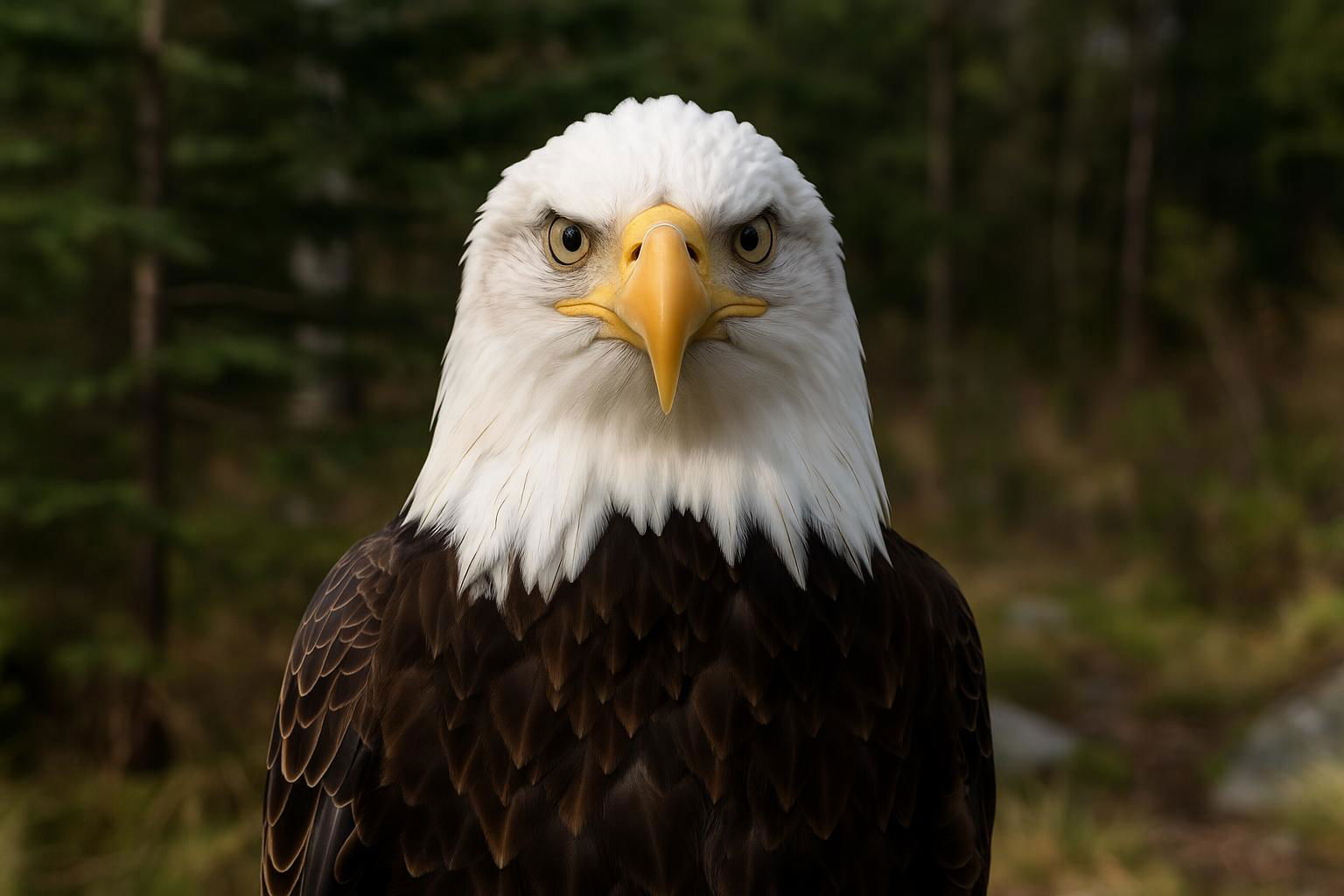
Bald Eagle
Haliaeetus leucocephalus
The Bald Eagle (Haliaeetus leucocephalus) is a majestic bird of prey renowned for its striking appearance and role as a national symbol of the United States. This raptor is characterized by its distinctive white head and tail feathers, contrasting sharply with its dark brown body and wings. Equipped with a sharp, hooked yellow beak and powerful talons, the Bald Eagle is adept at hunting and catching its primary diet of fish, but it is also known to feed on birds and small mammals when necessary. With a wingspan of up to 7.5 feet, it is one of the largest birds in North America, soaring elegantly at altitudes that can reach 10,000 feet.
Bald Eagles prefer habitats near large bodies of open water with abundant food supply and old-growth trees for nesting. They are most commonly found in Alaska and throughout coastal regions, though their range extends across the continental United States, Canada, and northern Mexico. Once threatened by habitat loss and the effects of DDT pesticide, conservation efforts have successfully led to a significant resurgence in their population. Noted for their loyalty, Bald Eagles often mate for life and reuse the same nest for several years, each year adding more material to the large structure. Their distinctive, piercing calls and graceful flight contribute to their status as one of nature's most iconic raptors.

 All Species & Breeds
All Species & Breeds
 Highland Cattle
Highland Cattle
 Miniature Donkeys
Miniature Donkeys
 All Species Directory
All Species Directory
 Highland Cattle in Virginia
Highland Cattle in Virginia
 Miniature Donkeys in Texas
Miniature Donkeys in Texas












